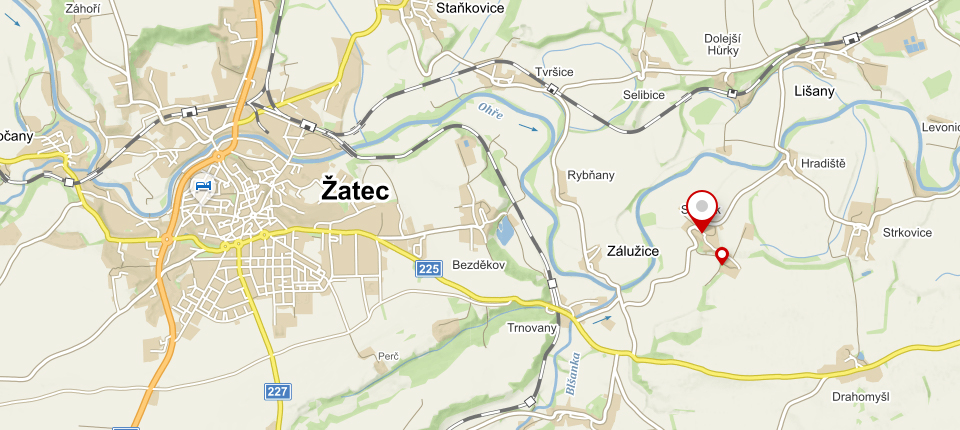HISTORICAL TRAIL POINTS
5. Czechoslovak military fortifications
The construction of the fortification line took place in 1935 - 1938. The total cost of the construction was estimated at CZK 10.9 billion and the line was consisted of 1,276 heavy and 15,463 lightweight buildings. The construction itself was to be completed after 1946.Until the border was transferred, on the basis of the Munich Agreement, a fifth of the total national border was built. Stekník was part of the C-14 section Měcholupy, the F. Hieke company from Louny was in charge of its construction. The construction of 87 light fortification objects began in the summer of 1937. The C-14/68/ B1-100 object, located in the castle garden, is a unique feature of this section. The owner of the castle, GeroldDéteindre, gave permission to build it. This object was concreted on November 2nd, 1937 and is interesting by the location of the loopholes, with one for the side and one for the front shooting. By the spring of 1938, all the buildings had been completed and probably equipped. The order to cover the border was given to units in the Poohří on September 22nd, 1938, but the subsequent signing of the Munich Agreement made the Czechoslovak fortification meaningless.
5 Czechoslovakian fortification
The need to protect the borders of the Czechoslovak Republic was considered form the beginning, when the army had to deal with skirmishes with group of people who did not agree with the establishment of the Czechoslovak state. When Adolf Hitler became the German Chancellor in 1933, the need to protect the state increased. Finally, it was decided to build a fort line along the endangered border. The order to build fortifications was issued on July 21, 1934, and in 1935 the Council for fortification and the Directorate of fortification works were established.
The construction itself was to be completed after 1946. The first building was built in 1935 and the heavy buildings began to be built the flowing year. Up to the referral of the border, under the Munich Agreement, a fifth of the entire fortification of the state border was built.
The territory of Louny region was based on a natural barrier in the form of the Ohře River and was divided into several sections, which were assigned to individual companies in the tender. Stekník was part of section C-14 Měcholupy, whose construction was in charge of the Louny firm F. Hieke. Construction of 87 light fortification buildings began in the summer of 1937.
The fortification was situated on both sides of the Blšanka stream and on the right bank of the Ohře River, consisting of two lines to guarantee the possibility of mutual covering. The concreting of one light fortification building took 24 hours including the installation of a horizontal metal fitting. By the spring of 1938, all buildings were completed and probably equipped. The order to cover the border was given to troops in the Poohří already in September 22nd, 1938, but the subsequent signing of the Munich Agreement made the Czechoslovak fortification meaningless. The unique feature of this section is the building C-14/68/B1-100, which is located in the castle garden and the owner of the castle, Gerold Déteindre, gave permission to build it. This object was concreted on November 2nd, 1937, and is interesting by the location of the shot, whit one for the side and one for the front fire.
Remarks
Since the building C-14/68/B1-100 is located in the castle grounds, it is listed as a cultural monument of the Czech Republic.
Have you not visited the hop path yet?
So you can take a stroll and read interesting facts about hops and the place.
You are entering the grounds of the Hop Institute, where agricultural machinery moves all year around. Take extra care! Enter at your own risk.


OPERATOR OF HOP TRAIL
 | Hop Research Institute Co., LTD Kadanska 2525 438 01 Zatec |
 | www.chizatec.cz |
 | +420 415 732 111 |
 | info@chizatec.cz |
HOP TRAIL | |
 | Stekník, 438 01 Žatec |
DOČESNÁ - DEGUSTACE PIV
Beer tasting during the beer festival at the Hop Research Institute in Žatec.
-traditional event for invited experts and laics at the Hop Research Institute
-accompanying program at the beer festival













